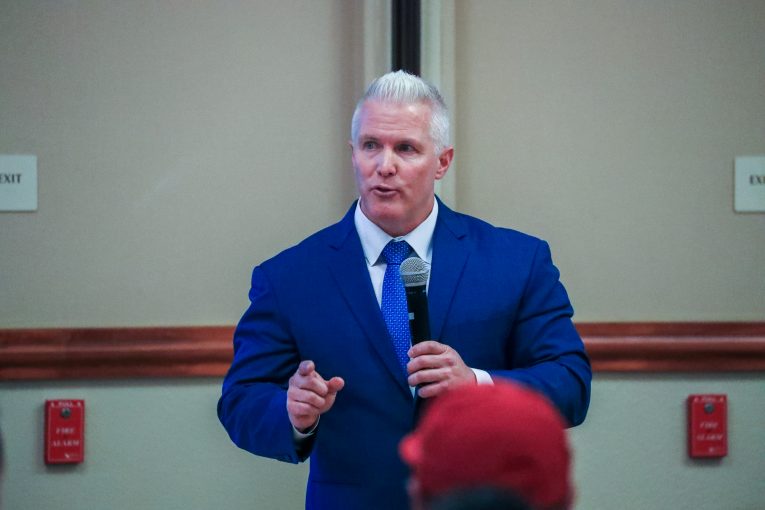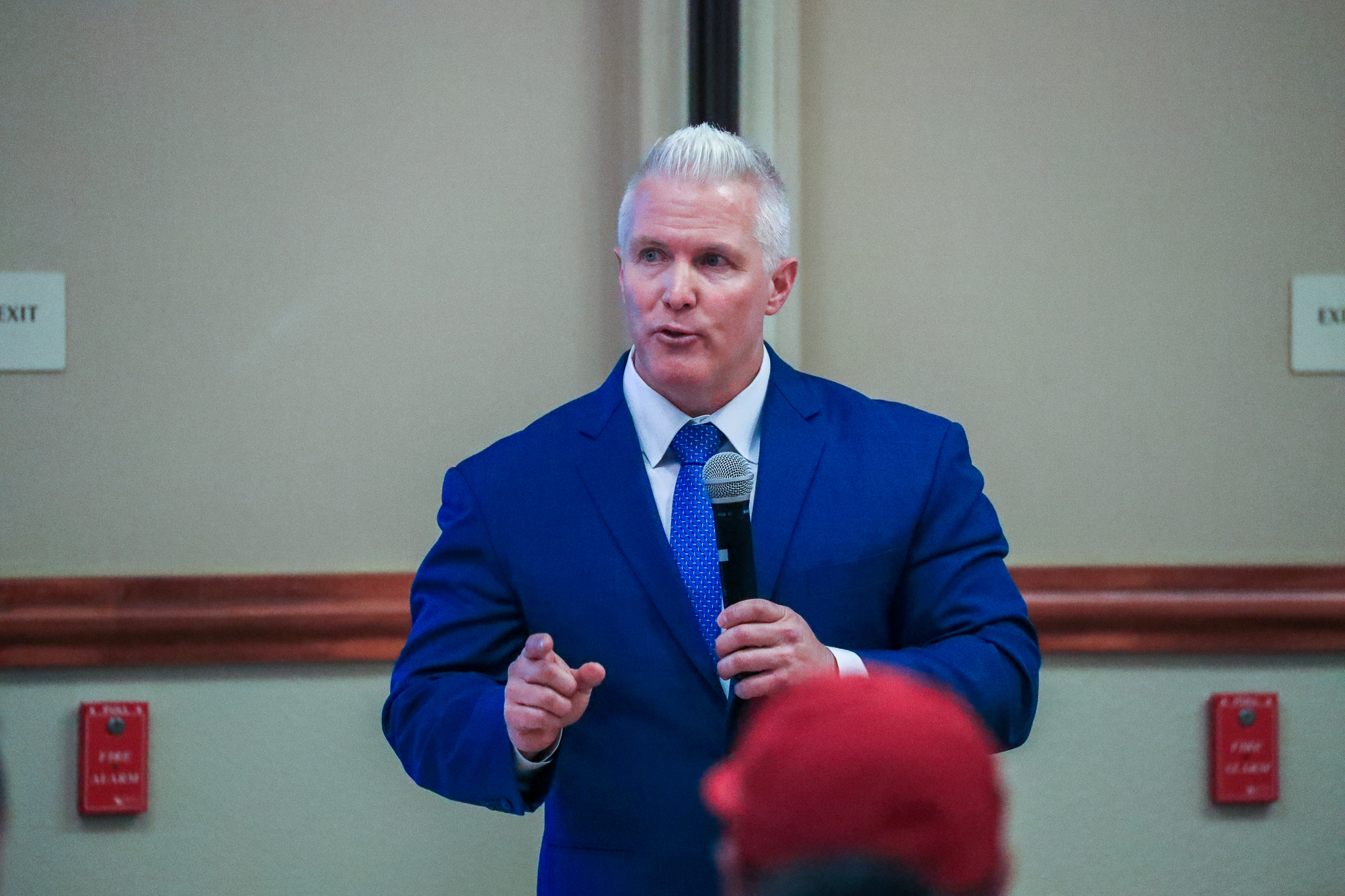

By David M. Greenwald
Executive Editor
Woodland, CA – There I was interviewing Akhi Johnson on the Reshaping Prosecution Initiative for the Vera Institute of Justice, and he surprised me by singing the praises of Yolo County DA Jeff Reisig.
“I’m going to shout to Yolo County in California, they’ve done a lot of amazing things in terms of diversion, using data, being transparent,” Johnson explained. When I pushed back, he added, “There are maybe 2300 offices or prosecutors in the country… even speaking of their data transparency portal, there are maybe ten that have something like that.
“Even from my interactions with him, he’s exploring a second chance sentencing initiative with For the People. Unfortunately there aren’t a lot of prosecutors even interested in something like that,” he added, noting that they are looking for prosecutors looking for some kind of reform.
That begs the question as to whether data transparency is actually reform. One of the points I raised last month was that, at the very least, having the data staring the DA in the face forced the DA’s office to tacitly acknowledge the racial disparities in Yolo Count—while in June 2020, they denied them and attacked the public defender for even raising the issue.
But is Jeff Reisig actually a reformer? Or have we just set the bar so low that what he does looks good compared to 90 percent of the other prosecutors?
Last month, CalMatters ran a piece on drug courts, and it featured Jeff Reisig.
It reported, “Last year, Yolo County tried an experiment: No one arrested for simple drug possession would be prosecuted or sent to drug court. Instead, those arrested with drugs were directed to the county health department. “
The publication reported, “Without the threat of potential jail time, people just weren’t showing up – participation in Yolo County’s drug court is down 86% since 2014.”
“What I was trying to do was test the hypothesis that this was solely a health issue,” said the plan’s architect, Yolo County District Attorney Jeff Reisig. “It was a total failure.”
The article goes on to note, “Instead, the benefits of both Prop. 47 and drug court are supported by evidence. Prop. 47 has reduced recidivism rates and saved the state money. Drug courts have shown that, when implemented correctly, they can reduce recidivism rates.”
It adds, “But when these two darlings of the criminal justice reform movement collide, drug courts have lost out.”
But the piece doesn’t report on the other side of the story. It simply takes DA Reisig’s word for it. Jeff Reisig of course has always opposed Prop. 47 and continues to do so.
Reisig explained during his successful reelection campaign, “Before Prop. 47 if someone was arrested with methamphetamine, for example, they would be arrested on a felony, taken to court and the first thing we try to do is get them into drug treatment. That’s a fact.”
He continued, “Well, when Prop. 47 changed it from felony to a misdemeanor what we’ve seen across California is a rapid drop-off in people wanting to participate in treatment at all. The reason is there’s no consequence. It’s a misdemeanor, it’s a ticket. It’s no different than walking down the street with an open beer.”
Reisig heads up the California District Attorneys Association which like Reisig, has long opposed Prop. 47. The CEO of CDAA, Greg Totten, claims that the “law hasn’t lived up to its promise on drug treatment.”
“The promise of the law was, more treatment, less jail,” Totten said. “But there’s actually less treatment when people don’t go to drug courts.
“From a common sense standpoint, why go into a treatment program rather than just walk out of the courthouse free?”
Even the Crime Report, a publication based out of John Jay College and ardently reform minded, reported yesterday, “As Penalties Ease, Drug Courts Lose Business.”
“Participation in California’s drug courts decreased statewide by 67 percent between 2014 and 2018. In contrast, a Pennsylvania program offering treatment instead of charges for drug offenses is gaining traction.,” they write and then cite the CalMatters article and reference Yolo County.
Is there another side to this story?
For one thing, we are talking about people arrested for simple drug possession. We are not talking about people who are going out and committing other crimes, just possession. Why are we even using the criminal legal system for simple drug possession unless there is an accompanying crime?
But, beyond that, the remedy should concern reformers. Coerced treatment.
Reisig acknowledged that his plan for treatment is in fact coerced treatment.
He said it himself, “The second issue that she brings up is the treatment issue. Well, guess what? Governor Newsom’s plan includes coerced treatment. I support him. The law worked on with Assemblymember McCarty had coerced treatment, and guess what every Democrat and every Republican in Sacramento supported us.”
It’s not just Reisig. It’s also Governor Newsom and his CARE Court.
CARE Court, however, has its critics who worry that it would take resources out of programs proven to work and put them into an unnecessary bureaucracy.
Susan Mizner, Executive Director and Founder of the ACLU Disability Rights Program explained “the money that we are spending through this incredibly unnecessary court system, and then locking people up in these institutions would be much more effectively spent by increasing the services, housing, and supports that we know have been effective.”
She added, “We know what works. We know that Housing First works. We know that patient and persistent outreach works. We know that harm reduction works and we know that we currently don’t have nearly enough money for any of those things in the system.”
Later she noted, “Intuitively, I think we can all understand that coercion when you are trying to work with a trusted medical professional is counterproductive.” She added, “Multiple studies have shown that coerced treatment is no more effective than voluntary treatment. That patient and persistent outreach is what is effective.”
Critics were also skeptical of Reisig’s plan for drug treatment.
“What AB 1928 proposes to do is create a new path for these people that is all about treatment,” Reisig said. “Instead of being warehoused in prison, they are being offered an option to choose treatment in a secure facility.”
AB 1928 would establish a secured drug treatment facility where felony offenders could be sentenced and treated for substance use disorders rather than serving a jail or prison sentence, according to the bill.
At the Board of Supervisors meeting, Yolo County Public Defender Tracie Olson argued for voluntary treatment rather than AB 1928.
She explained that this law incentivizes prison sentences because the DA decides what offenses to charge, which to dismiss and whether prison should be offered.
She said, “What is perceived to be a great treatment program is only offered with a prison sentence, that’s what we’ll get.”
So once again, the push for reform actually comes back to a push for coerced treatment for drugs, dressed up in the language of alternative sentencing. At the end of the day, that’s not really reform.


I suggest that you stop talking to the ACLU and public defenders about efficacy of drug treatment programs.
Without what you call coercion, you won’t get people into treatment programs. Period. The data shows that. That is very evident. Legislators and the governor recognize this. Reisig supports programs which divert people into treatment. He has the overwhelming support of the voters of Yolo County. By any measure of a prosecutor’s office, he is a reformer.
Arguing for voluntary programs and bemoaning some lack of resources to implement them is not a policy prescription. It’s an argument for revolving doors and continued substance abuse, with the attendant crime that goes along with that.
You are really out in left field on this topic.
https://nida.nih.gov/publications/principles-drug-abuse-treatment-criminal-justice-populations-research-based-guide/legally-mandated-treatment-effective
Critics point out that “involuntary and immediate” cessation of use often does not lead to lasting recovery, as it only deals with the chemical side of the equation and fails to address the underlying reasons why the person turned to drugs in the first place.
Researchers in a 2016 Boston University Medical Center study looking at current global evidence found “mandatory treatment for people with substance use disorders is not effective in reducing their drug use.”
“Coerced treatment isn’t proven to be better than voluntary treatment, it doesn’t have better outcomes to threaten people with incarceration or force them into a locked facility,” said Glenn Backes, a social worker and Public Policy Researcher with Drug Policy Alliance.
A big question is should we even be spending resources on people for simple possession charges in the first – many of whom don’t actually have substance abuse issues?
The first bolded section above “they denied them”) appears to be factually untrue, and the second section (“attacked the public defender for even raising the issue”) is a misinterpretation.
The data is what it is – they did not “deny” it (and likely provided the data in the first place).
Though I’d like to know more about how/when this information is gathered and recorded, as well. For example, is someone attempting to determine this solely based upon appearance?
Here is the letter from Reisig to Tracie Olson from 2020, the readers can decided if this is either a denial or an attack…
Link
Without going into the minutiae of whatever Tracie Olson said (and the response from Reisig), I would think that you’d have to define what was being “alleged”, and what was being “denied” from those two sources. It could be that they’re talking about two different things.
Leaving aside, for a moment, the definition of “attack”.
The data is what it is, so I don’t think that’s the basis of the fundamental allegation or denial.
It’s possible that the response from Reisig is an over-reaction to whatever was said. Or, maybe he was reading ‘between the lines” of whatever Tracie Olson said.
Underlying all of this is a disparity in outcome. Folks then take up positions regarding whether or not that’s the result of systemic racism, vs. differences in crime rates. (That’s where all of the allegations, denials, and attacks originate from.)
Some folks set-out to “prove” that differences in outcomes is a result of systemic racism, which then facilitates defensiveness for those involved in the system.